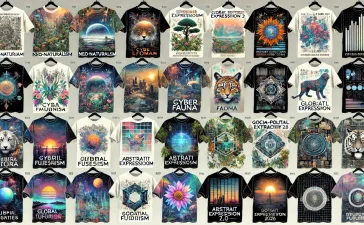ArtSHINE outdoor cushion Collections by Avldesigns & Gabby Malpas
In today’s world, consumers have become more discerning and demanding. They no longer want to buy products just for the sake of owning them. Instead, they want to buy experiences that align with their values, beliefs, and aspirations. Brands that understand this shift in consumer behaviour and adapt accordingly are the ones that will succeed in the long run. In this article, we will explore how brands can move away from selling products and start selling experiences.
The first step for brands is to audit their brand strategy. A brand strategy is a plan that outlines how a company will position its products or services in the market to meet the needs of its target audience. It includes a brand story that communicates the brand’s values, mission, and unique selling proposition. A brand strategy is essential because it sets the tone for all other marketing activities.
When auditing your brand strategy, the first thing you need to do is to identify your target audience. You need to understand who your customers are, what their needs are, and how your product or service can help them. Once you have identified your target audience, the next step is to check if your brand story resonates with them. Your brand story should reflect the values, beliefs, and aspirations of your target audience. It should be something that they can relate to and that aligns with their worldview.
To create a brand story that resonates with your target audience, you need to answer a few questions. First, what does your product or service do for them? What are the benefits that they will get from using your product or service? Second, what are the emotional benefits of your product or service? How will your product or service make them feel? Finally, how do you want them to feel when interacting with your brand? Do you want them to feel happy, inspired, empowered, or something else?
Once you have answered these questions, you can use the emotions you want to evoke to guide your brand storytelling approach. Your brand story should be something that evokes the emotions you want your target audience to feel. For example, if you are selling a luxury product, your brand story should evoke feelings of exclusivity, status, and sophistication. If you are selling a product that promotes sustainability, your brand story should evoke feelings of responsibility, empathy, and environmental awareness.
To take your brand storytelling to the next level, consider interviewing your current customers. Ask them how your brand has impacted their lives, what emotions they associate with your brand, and what kind of experiences they have had with your brand. This feedback will help you refine your brand story and make it more compelling for your target audience.
Unsurprisingly, other practices, such as sustainability reporting, have been the go-to for many brands, especially as consumers are increasingly conscious of environmental and social issues. Demonstrating your commitment through transparent reporting builds trust and sets you apart from the competition. It showcases your brand as socially responsible and environmentally conscious, appealing to a growing segment of consumers who prioritize ethical and sustainability practices.
In conclusion, selling experiences is the future of marketing. Consumers want to buy products that align with their values, beliefs, and aspirations. Brands that understand this shift in consumer behavior and adapt accordingly are the ones that will succeed in the long run. To start selling experiences, brands need to audit their brand strategy, check if their brand story resonates with their target audience, and use emotions to guide their brand storytelling approach. By doing this, brands can create emotional connections with their target audience and build long-lasting relationships that go beyond just selling products.
Want to learn more?
- Find out more
- Launch Pad + Accelerator Expressions of Interest
- Selling and Licensing Your Art & Designs Around the World with ArtSHINE.
We’re here to help you to take action, just like we’ve helped thousands of other entrepreneurs, business owners, and creative professionals all around the globe.
Now is the time to let your passion SHINE.
Now is the time to Make Tomorrow Today!
To your success, Vinh Van Lam and Stuart Horrex Cofounders
ArtSHINE.com





